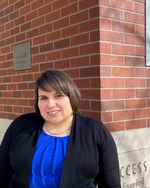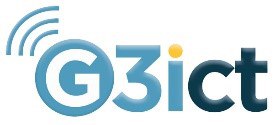Accessibility by Default – Could This Be the Future?
Posted on November 25, 2019

Chief Research and Innovation Officer, Funka and IAAP Representative to the EU
The European Parliament has funded a pilot project aimed at investigating which accessibility features could be built into authoring tools, in this case content management systems, CMS. Funka has led the 1.5 year-long project, partnering with CTIC and collaborating with stakeholder organisations as well as producers and suppliers of CMS.
The background of the project is the European Web Accessibility Directive, which stipulates that public sector websites, extranets, intranets, documents and apps must comply with relevant accessibility requirements, pointing to the EN301549 for reference. Since the world is not perfect, this means that hundreds of thousands of interfaces must be retrofitted and millions of civil servants as well as developers, UX designers, graphic designers, web authors and many other professionals must be trained in accessibility to make sure new interfaces become inclusive.
The task is overwhelming. There is, to put it mildly, a severe lack of experts to make sure this legislation can have the desired impact.
A Potential Solution
So, what if authoring tools could provide accessibility by default? Both in a purely technical sense, but also when it comes to the human factor, this could have a great potential: If the built-in features didn’t permit the creation of non-accessible code, this would increase the level of accessibility even before anyone started using the website. If the systems could also help the authors to publish in an accessible way, life would be easier for many professionals and much less inaccessible content would be produced. It almost sounds too good to be true, but even the obvious must sometimes be tested in real life.
Getting Started
The project began with a mapping exercise, where we investigated which CMS are most used by the public sector in Europe (the coverage of the directive). We then applied a set of selection criteria to make sure we would end up with a broad and diverse group of authoring tools to work closely with. The tools we chose are all widely used and cover popular CMS from different parts of the EU, including licensed and open source CMS as well as tools based on different technology.
After the selection process, we started contacting a long list of CMS producers, suppliers, partners, networks and open source communities to ensure we were in contact with the most knowledgeable individuals and companies when it comes to accessibility.
To try out the potential for built-in accessibility by default, we developed surveys, carried out interviews and built prototypes together with the CMS providers. After collecting all this data and developing and testing a set of prototypes, we invited end users, public sector web-professionals as well as the industry and standardisation bodies to a series of three workshops in Brussels, where we presented the preliminary results of the research. The workshops were organised and held in close collaboration with the European Disability Forum (EDF), the European Regions Research and Innovation Network (ERRIN) and the consumer voice in standardisation ANEC. The feedback from the three user groups will be included in the final report.
Results
The results of the project are, in short;
- The tools are different in many ways, but when it comes to accessibility, they share many of the same challenges.
- Authoring tools have a great potential to facilitate and increase accessibility, many of which are not yet developed, designed or implemented – even though they are technically possible.
- Sharing ideas and good practices in the CMS industry could speed up the development of built-in accessibility features.
- Back end accessibility, i.e. the possibility for end users with disabilities to work with the tool, is scarce.
Next Steps
As part of the project, we will publish guidelines for end users, public sector agencies and standardisation bodies on how to choose the right authoring tool. These, and other fact sheets including research documentation, will be published on the project website by the end of the year.
Just before writing this blog post, I learned that we have been awarded no less than two follow up projects focussing on accessibility by default in authoring tools, based on the results of this pilot. In the step two projects, we are actually going to implement the lessons learned from step one. Stay tuned!
we4authors project website
About the Web Accessibility Directive





























